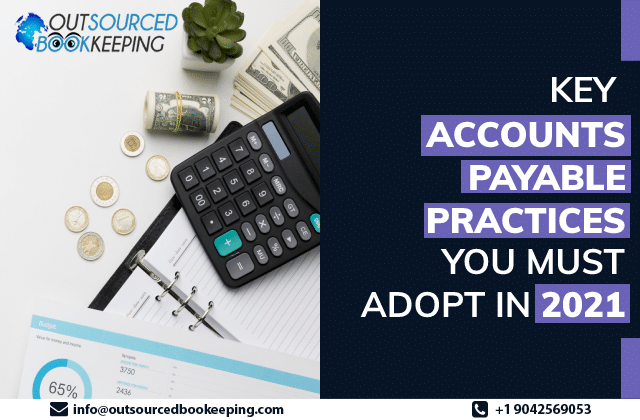Unoptimized working capital management can pin down the free cash flow and impede the business growth even with thriving sales and revenue. Small and medium business who often multi-task theirs out of accounting look at every potential cause of this working capital problem except where it truly matters – Accounts Payable.

It is 2021 and yet many small and medium businesses still adhere to traditional AP workflow with or without automation and this is why most fall short of achieving better working capital optimization for sustained growth. In this blog here, we help you understand the importance of streamlined and efficient Accounts Payable for working capital optimization and then share a few Accounts Payable practices that can help you free up your working capital. Read on:
Accounts Payable Processing – A-Pillar for Working Capital Optimization:
With the global economy gradually recovering after the COVID-19 crisis, businesses are naturally cornered to do more with less and make use of every opportunity to get back on track. So having greater availability of working capital is the key here, whether to aim for growth, improve their operations, and service levels and even to grab profitable investment opportunities.
This is why optimized working capital is important to free up the cash and improve liquidity for not only smooth functioning of the business but also grab the opportunities head-on. And efficient Inventory & cash management, Accounts Receivable and Accounts Payable are four pillars for working capital optimization. While most businesses do reasonably well in inventory, AR and cash management, Accounts Payable Processing is often their Achilles Heel when it comes to optimization of working capital.
Accounts Payable Mistakes and Best Practices:
Most business lack a streamlined Accounts Payable Processing that is optimized for smooth functioning, and better working capital management. For example, to increase the free cash flow, business resort to extending the payables for as much time as possible which can be detrimental in the long run and will negatively impact the business. Delayed payments may strain your relationship with your suppliers which is not particularly helpful for small and medium businesses. Delayed supplies, late deliveries, not so optimal customer service when you try to fix defects, stringent and unfavourable payment terms – there are more problems with this strategy than the benefits. On the other hand, early payments may not be beneficial if you are looking for free cash flow.
It’s 2021 and if you still struggling with your cash flow due to your AP, then our Accounts Payable Specialists at Outsourced Bookkeeping are here to help you. Being one of the best back-office accounting firms in the business offering Accounts Payable Services to businesses all around the world, we have identified a few best Accounts Payable practices that you can adopt into your Automated Accounts Payable for better working capital optimization and overall performance. Read on to know them:
- Simple, standard and centralized workflow: The first thing you can do to make the most out of your existing Accounts Payable Processing is to simplify and streamline your existing workflows. Have a centralized platform for invoices to access them easily across the enterprise, automate key businesses processes like data entry, approval automation, verification of payments and invoices – you can start with these if you haven’t already.
- Vendor selection and scoring system: Most successful business we work with at Outsourced Bookkeeping handpick their vendors by following a comprehensive vendor selection process. This step not only prevents maverick buying but also help you negotiate the best payment terms possible for your business. Adopt a scoring system for your vendors based on their performance so you can make use of these scorecards during negotiation of pricing, product quality, customer services or early discounts or rebates. Favourable terms must be negotiated for a longer time frame when coming from the position of strength. You can also outsource Accounts Payable Processing for back-office accounting firms, as far as this step is concerned.
- Master data portal for suppliers: Most business fall short of taking full advantage of early discounts and worse, commit accounting and payments errors- all due to lack of an efficient and accurate master data portal for suppliers. As you capture the right payment terms all the service-level agreements must be captured and maintained in the relevant systems of the master supplier data portal. This must also include all the quality and delivery standards, timelines, compliance details, supplier roles and responsibilities and all the details that keep you top on the things at hand. You must also make sure to regularly update them as per the renegotiated terms.
- Standard invoicing process: Lax invoicing and reporting process is one of the major reasons most businesses fall short of their KPI goals. Have a centralized invoice process in place that follows strict guideline and rules to process invoice at a right time. Follow a standard approach for inaccurate invoices and for situations where you have to pay different invoice amounts. Having different individuals perform a different role in the AP department can improve accuracy and also decrease the risk of fraud- make sure the data is centralized for them to verify though. And don’t forget to make your vendors aware of your current invoice process- this must be your first step when you on board a new vendor.
- KPI goals are mandatory: All small and medium business go along the AP, processing the invoice as they arrive and miss one key step that is important for scaling their AP – adhering to KPIs. As you update your AP process, change the workflow or adapt to new practices you must be aware if you are making the most out of the new tweaks and KPIs help you do so.
Understanding and making use of the right Key Performance Indices like Average cost per invoice, Invoice cycle time, Discounts captured, Rate of wrong payments and more, help you analyse your performance and make the right tweaks to reach your AP goals.
If you are only starting, it’s highly possible you are not aware of the right AP strategy, workflows, automated solutions or even KPIs to help you go about your business. And this is where back-office accounting firms like Outsourced Bookkeeping can help you. Our Accounts Payable specialists are experienced and well equipped in providing high-performance outsourced Accounts Payable Services for all types of businesses. You can find us here: https://outsourcedbookeeping.com/








